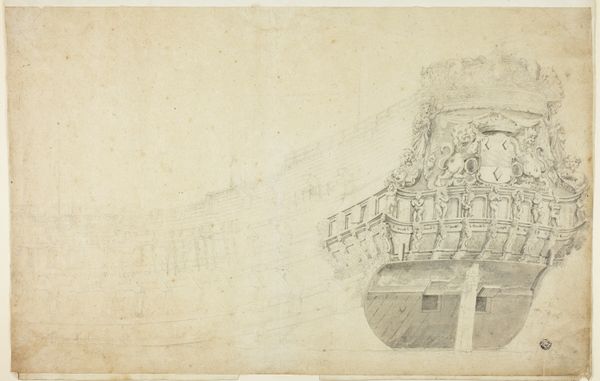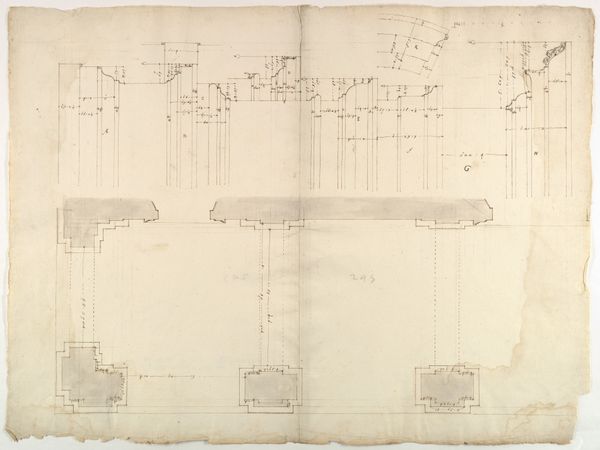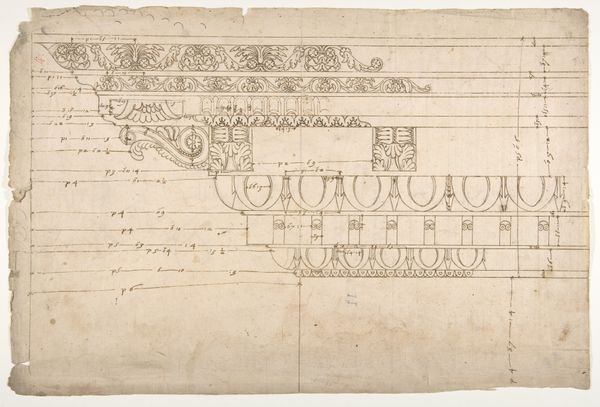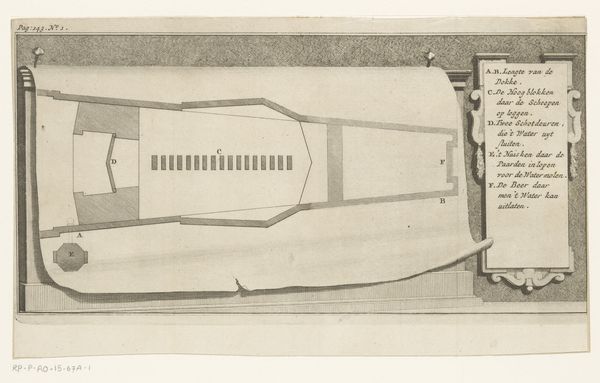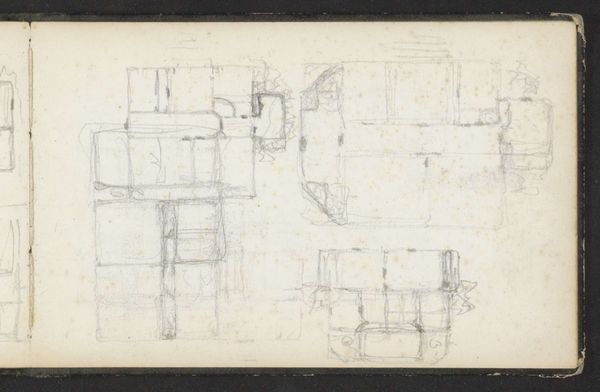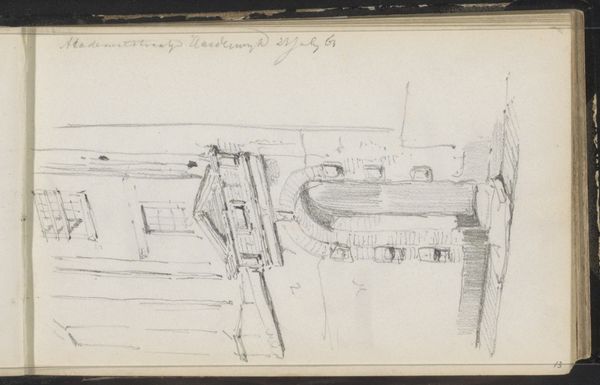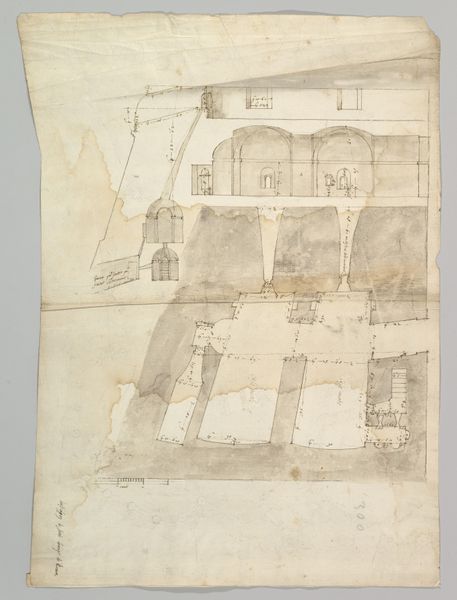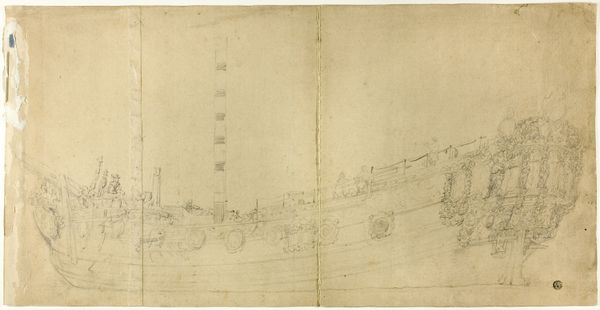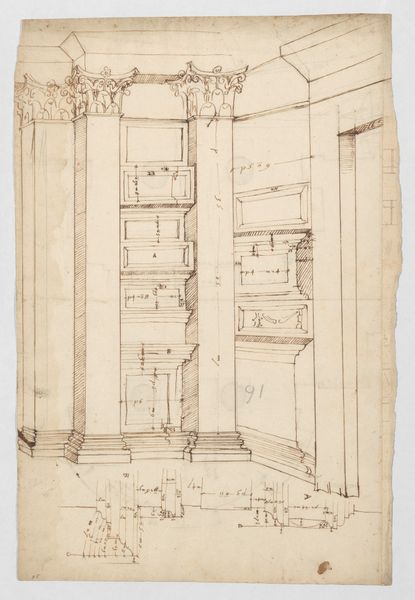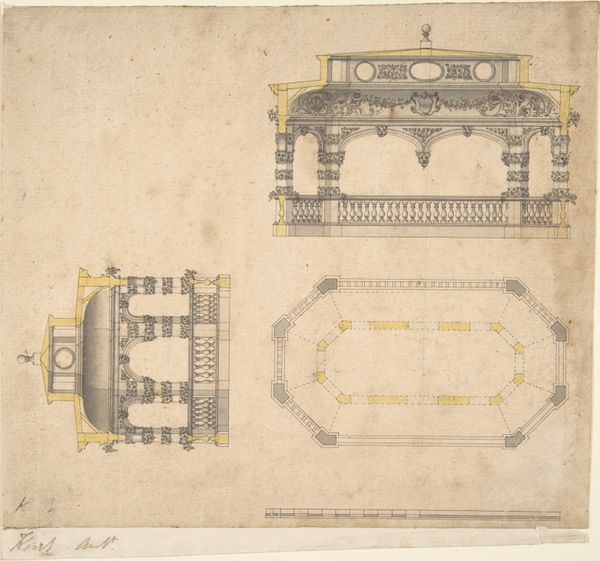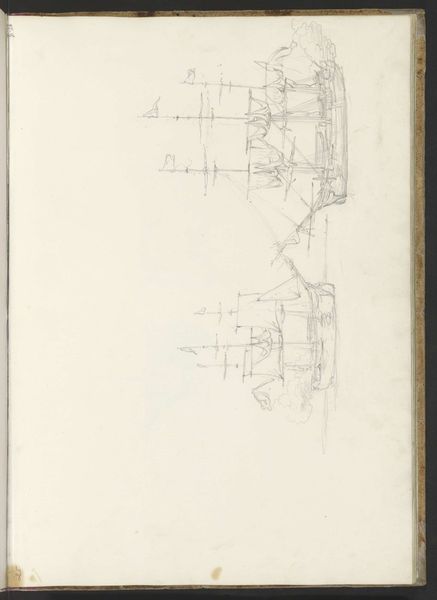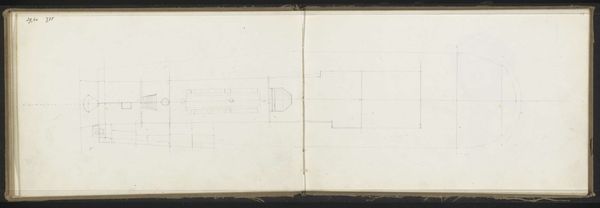
drawing, print, paper, ink, pencil, chalk, graphite
#
drawing
# print
#
pencil sketch
#
landscape
#
paper
#
ink
#
pencil
#
chalk
#
water
#
graphite
Dimensions: 184 × 515 mm
Copyright: Public Domain
Curator: This drawing is by Willem van de Velde II; it's titled "Armed Galleon Seen from Starboard Quarter." The artist employed ink, graphite, chalk, and pencil on paper. Editor: There’s an immediacy to the rendering; a feeling like it was captured quickly, perhaps even en plein air. I notice the density of the graphite at the hull; it seems to ground this massive warship on the page. Curator: Indeed. Van de Velde was a master of maritime art, often present at naval engagements to record events firsthand. These were, essentially, news sketches! This would have provided insight into ship design and power projection at the time. Editor: The lines remind me of nautical charts; the drawing seems to perform as an architectural rendering as much as an artwork, a crucial way of standardizing craft knowledge for shipwrights and the Dutch admiralty alike. Were these sketches incorporated into other, larger works or disseminated to a wider audience? Curator: Van de Velde produced many such studies that he would later incorporate into his grander history paintings and prints. Beyond their immediate informational purpose, these studies had their own circulation among collectors. The materiality tells only half the story here. Symbolically, the warship served as a vessel for trade, expansion, and conquest. The symbolic weight of these galleons is enormous. Editor: It is true: by foregrounding maritime military prowess and technology, such drawings can naturalize ideologies that are often overlooked. Looking closer at the paper and media, I’m interested in how a preliminary sketch, in graphite and chalk, can also hold tremendous representational value. It complicates the role of artistic labour involved in war propaganda, naval engineering, and luxury markets at this time. Curator: The details are indeed telling, aren’t they? And it showcases his deft hand and eye. Ultimately, that balance—of artistic merit, representational authority, and naval might—make it quite remarkable. Editor: Precisely. By looking at the tools that enabled its production, we can perhaps grapple with some of the more abstract values it projects. Thanks!
Comments
No comments
Be the first to comment and join the conversation on the ultimate creative platform.
